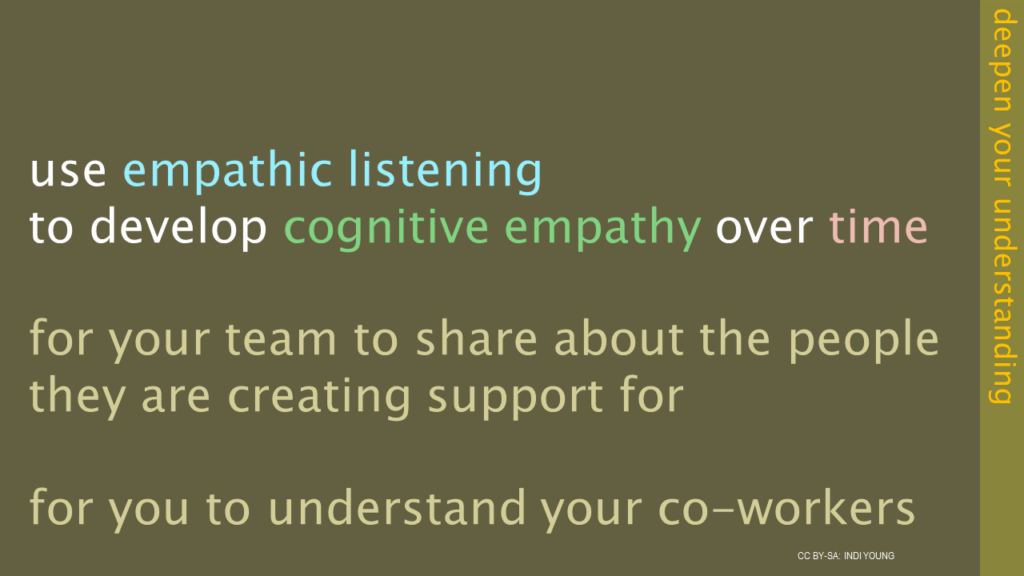There Are Many Types of Empathy
Empathy isn’t just one thing. In psychology literature, it’s defined many ways, and all those are valid types of empathy. In 2011 Daniel Batson tried cataloging all the types. Here’s my best attempt at explaining his work, plus how we bring two types of empathy to bear on understanding people in the problem space, as a part of our work and careers.
The word empathy originated in the late 1800’s in Germany within the art world. It was a way of people trying to understand what the subject in the painting was thinking and feeling. It’s definition #4 in Daniel Batson’s list below, which I’ve somewhat re-worded here.
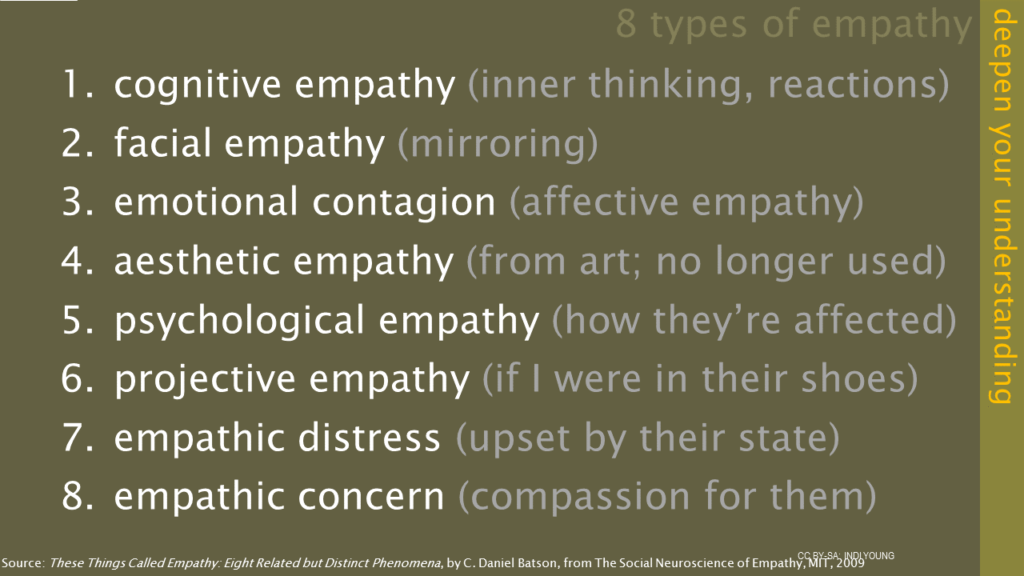
Two of these words are not used currently: the original art-world use and #6, the projective use of putting myself in someone else’s shoes. This latter use is the “If I were them” scenario, which as been replaced with “If I were them, thinking and feeling like them” as if you are an actor playing that character.
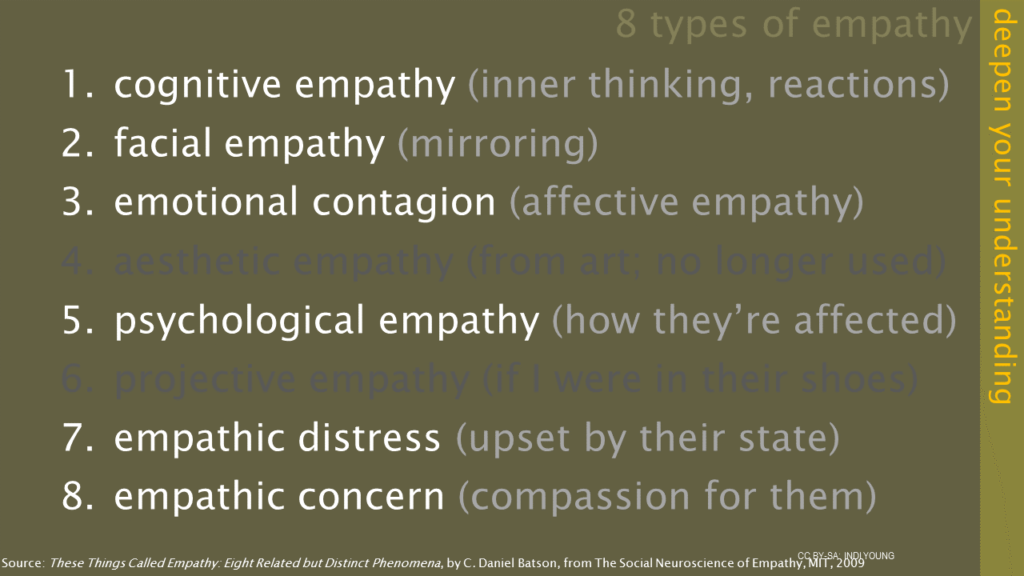
(Note: Confusingly, some dictionaries still use the original #4 definition from the art world. So you continue to see articles written in UX that try to incorporate the #4 definition and twist it into emotional contagion, #3.)
The two definitions that faded from view have been replaced in the last few decades with newer interpretations. I’ve put “empathic listening” in the #4 slot because this is the most used type of empathy, commonly referred to as just “empathy.” In the #6 slot I’ve put self empathy, growing from recent mindfulness, emotional awareness, and self-care work.
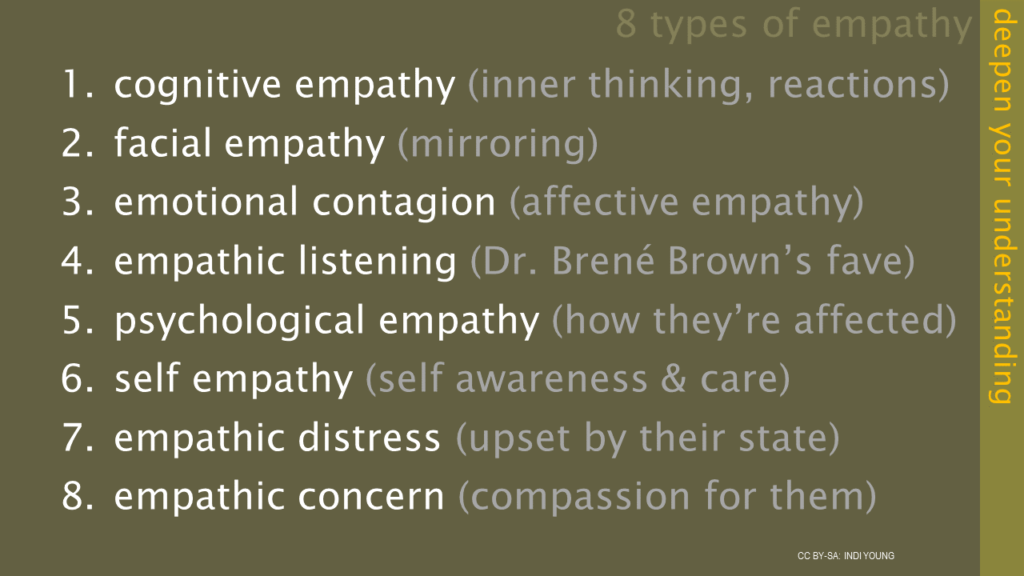
Another frequently used definition is #3, emotional contagion. This is the kind of empathy where you feel what another person is feeling. It’s another definition that people mean when they just say “empathy.” It’s what Paul Bloom and Don Norman have railed against in their writing because it causes emotional exhaustion. They both say that compassion is “better than empathy.” Compassion is #8 in this list, empathic concern.
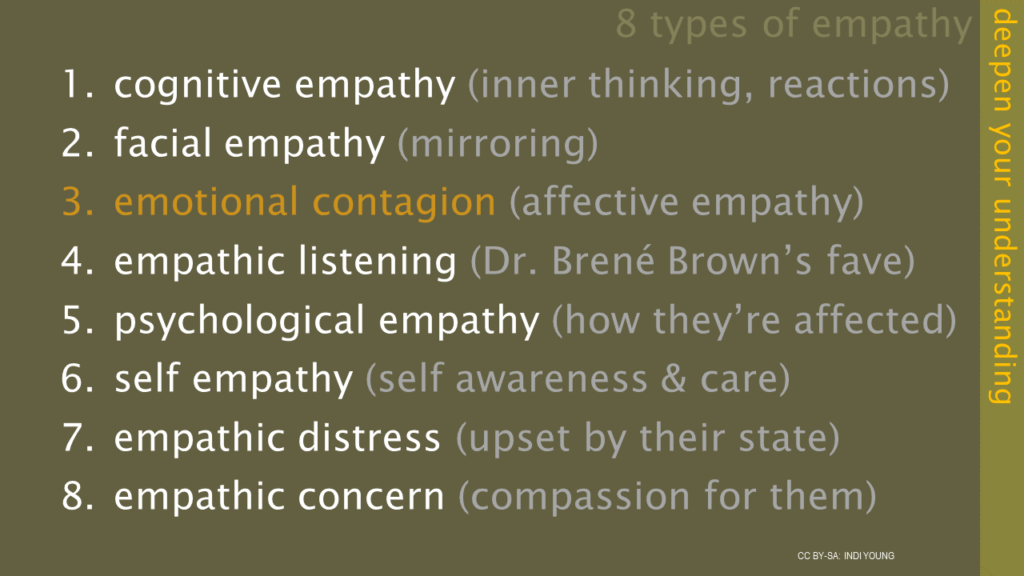
Let me dive into emotional contagion for a bit. Emotional contagion is used in our work and our careers as a way of manipulating people. It is often used in advertising, but also in dark patterns. It can be used for bright patterns as well, so it’s worth mentioning here.
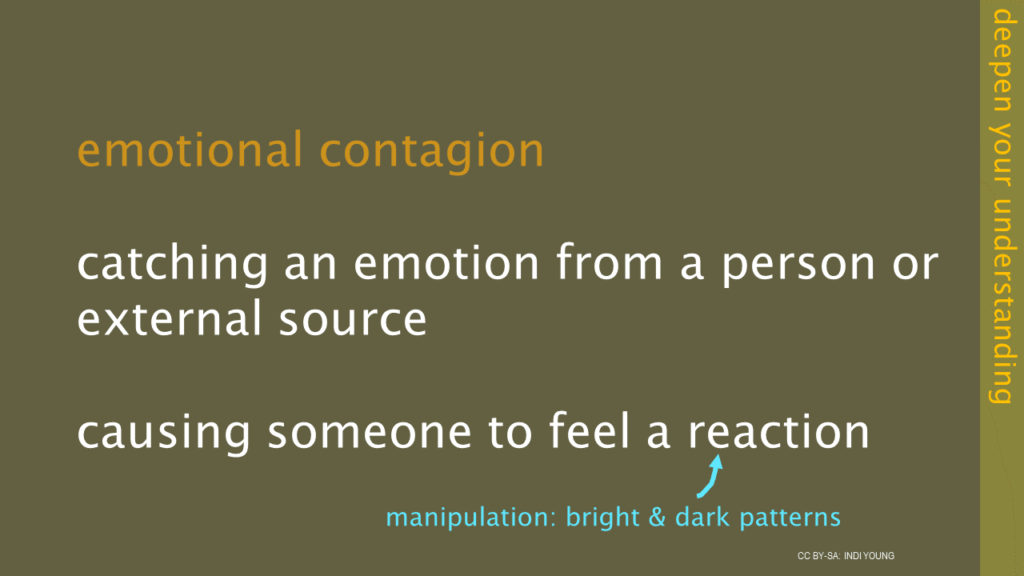
Empathic listening is listed here as being Dr. Brene Brown’s definition of plain “empathy.” It’ my way of giving props to the good work Dr. Brene Brown has brought to the world.
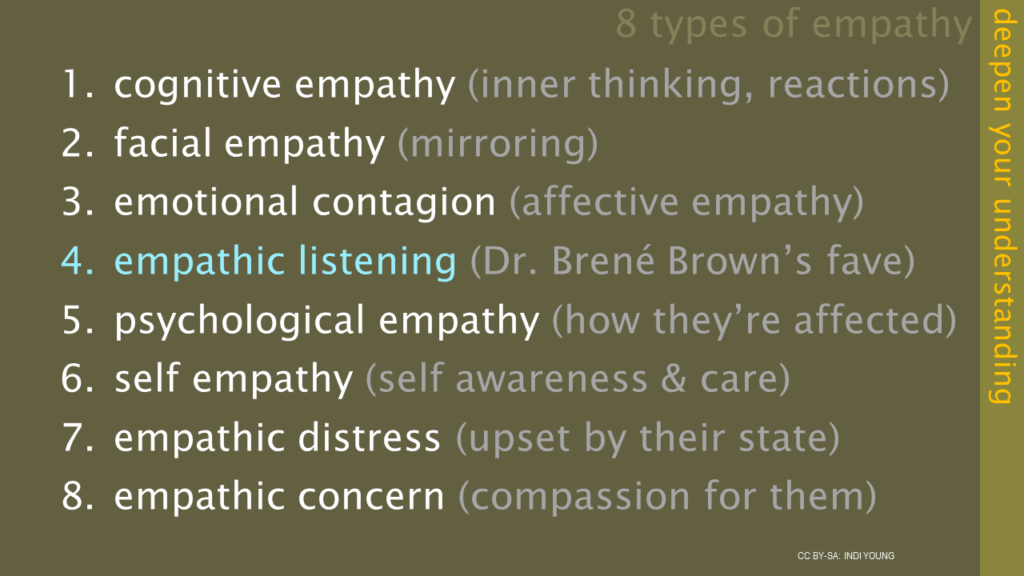
Empathic listening is about helping a person feel heard. Feeling heard is a rare thing, so it’s powerful. It’s used in work to both understand people that your organization supports and to understand others that you work with. It’s the foundation of building relationships and trust.
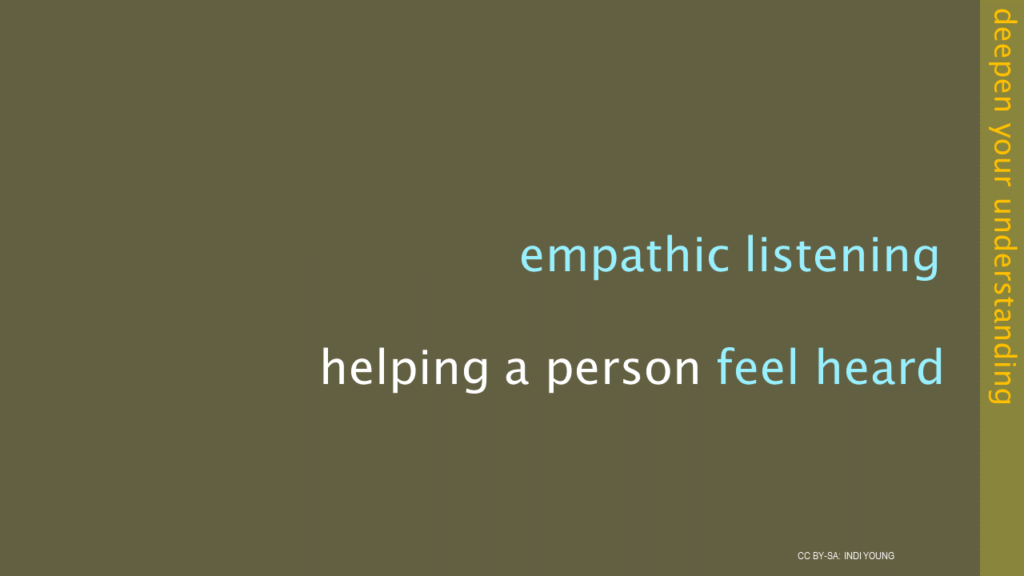
There are four steps to emapthic listening. Frequently these four steps are described only with respect to someone’s emotion, but truly it includes recognition of both a person’s emotion and inner thinking. I call it “something going on.”
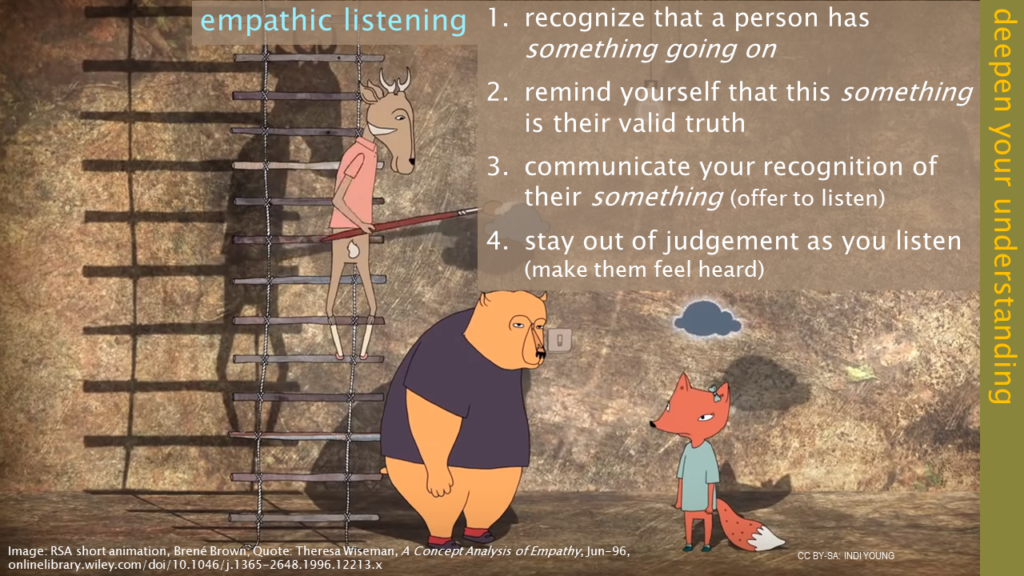
- Recognize that a person has something going on
- Remind yourself that this something is their valid truth
- Communicate your recognition of their something. Offer to listen.
- Stay out of judgement as you listen. Make them feel heard.
A third type of empathy, #1 cognitive empathy, is a key part of the problem space.

Cognitive empathy is purposely trying to create an understanding of what it’s like inside another person’s mind. It includes that person’s inner voice, their inner thinking, emotional reactions, and guiding principles. Cognitive empathy is what we are after while listening deeply to someone.
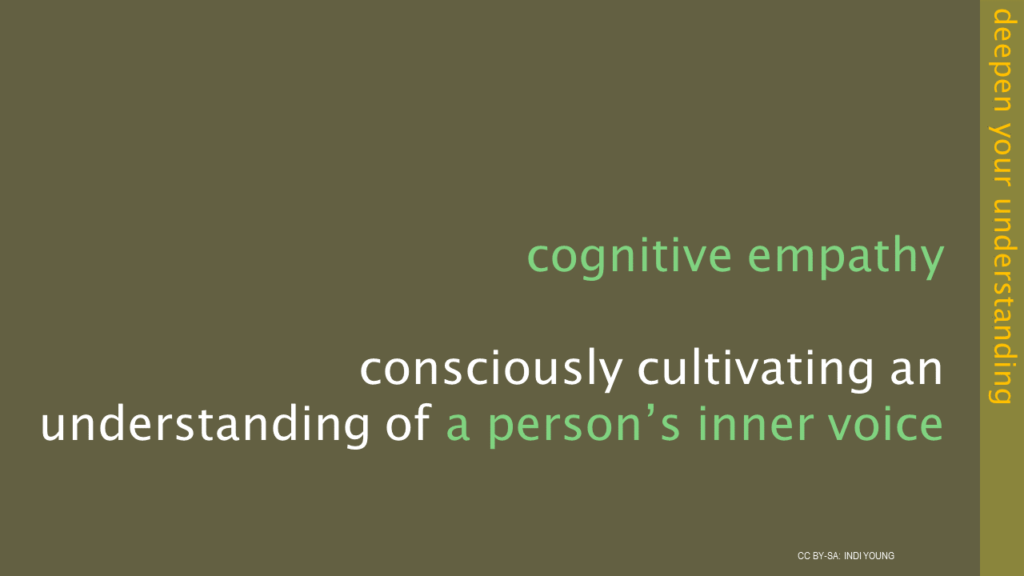
So, there’s an equation to how I use two kinds of empathy in my work. I use empathic listening to develop cognitive empathy. I use it over time. Time is an important part of the equation. Cognitive empathy doesn’t instantly appear. I use listening sessions to develop cognitive empathy with research participants. I use listening sessions with stakeholders over months to develop direction and trust. I use listening sessions over years with my co-workers to build enduring collaborative relationships.
